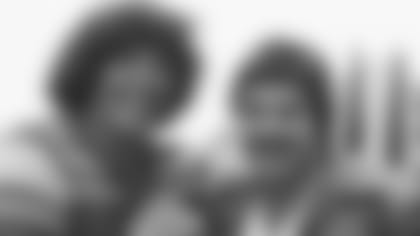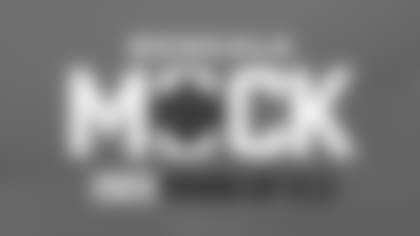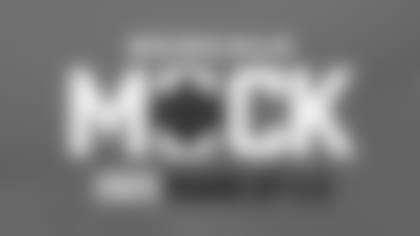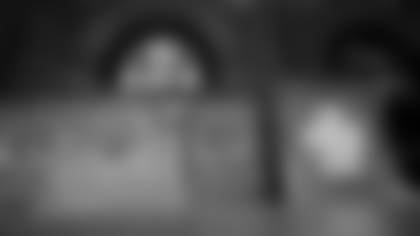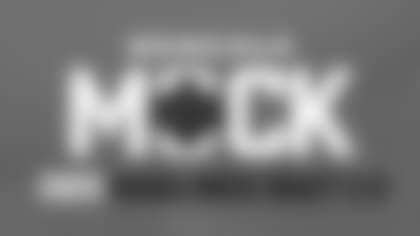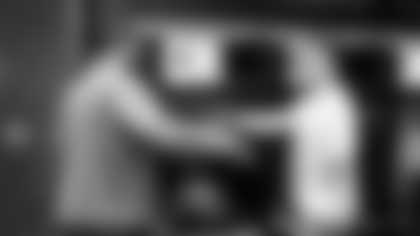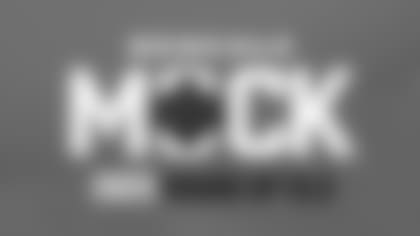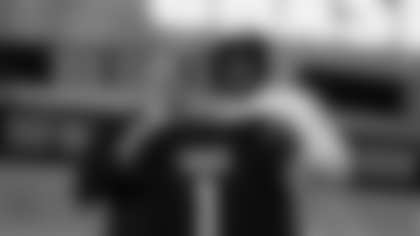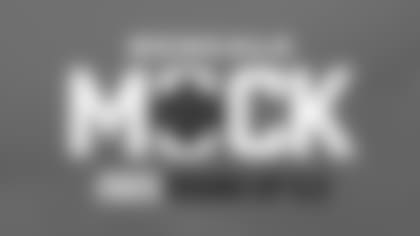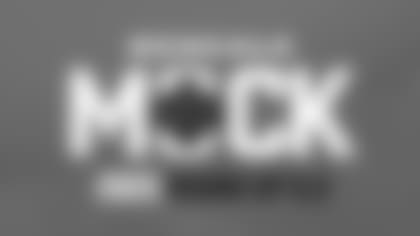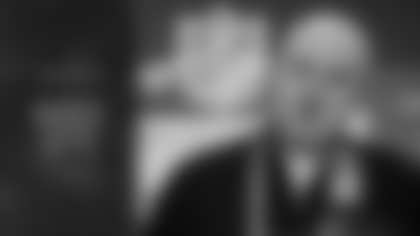Anthony Munoz and his friend, Brad Budde, exult at USC after they got the calls on Draft Day, 1980.
Anthony Munoz, the greatest left tackle who ever lived, punched out the only NFL coach that came to visit him in that prehistoric pre-draft season of 1980.
Three major collegiate knee surgeries sentenced him to the longest exams of each of the half dozen or so scouting combines that prospects were then subjected. He played only one full game his senior year, the last one in the Rose Bowl.
And even though the Bengals held the third pick in the draft, Jim McNally, the club's rookie offensive line coach, wasn't even asked to write a scouting report on the not-so-gentle giant from USC. Jim, the family told him, just look at these two games from last year. McNally, freshly arrived from Wake Forest, knew he was no longer in the ACC.
If it had all the making of a Draft Day slide, maybe now. But not then.
"I said, 'Wow,'" McNally recalls. "I don't even think I had to write anything because it was etched in stone."
What was once Flintstones is now Rolling Stones. The scouting and drafting of Munoz, the best Bengal ever celebrating the 20th anniversary of his election to the Pro Football Hall of Fame, is both ancient and prescient as we stand on the verge of another NFL Draft. Once a fly-by-night operation lit by neon, the draft is now a multi-million dollar industry blinding with the glare of prime time.
The 1980 arrival of Munoz in Cincinnati at the dawn of cable TV is a glimpse of both.
"Probably no chance," says Munoz of the odds someone would take him No. 3 in Thursday night's spectacular. "Probably no chance of having a look with all the injuries. I doubt it very seriously that would have been the outcome. But who knows?"
The Bengals made the call because they did 21st century due diligence. They flew Munoz from Los Angeles to Cincinnati more than three months before the April 29 first round to be examined by team doctor George Ballou at Christ Hospital. After being dispatched by Bengals business manager Bill Connelly, he then went to lunch with McNally and vice president of player personnel Pete Brown. The man who would become a Mount Rushmore face in the Queen City as a spiritual and community leader as well as an iconic athlete, first dined in Cincinnati at Victoria Station.
Nowadays, the pre-draft visit, a physical, along with a five-star lunch or dinner is the league norm for the top prospects for all teams. Back then, a visit and a doctor's appointment dressed in a USC sweat suit complete with lunch not far from Spinney Field, the Bengals' Lower Price Hill practice facility, just didn't happen. The Bengals were the only team to bring him to town before the draft.
"We would have done that for very few," says Bengals president Mike Brown.
It is 38 drafts later and Brown is holding the pieces that made Munoz a Bengal. It is not a scouting report authored by McNally or Pete Brown or even new head coach Forrest Gregg, the Hall-of-Fame tackle Munoz took down. Or a cut-up video of his best plays. Or a clip of his interview with Gregg that day at USC.
Instead, there is the note Mike Brown wrote to himself after getting off the phone with Ballou following the morning exam of Munoz. "Had no reaction to playing in the Rose Bowl. Wears Lennox brace plans to continue to wear brace in games. George says this should not be a problem." Brown concludes, "Will need continuing work on legs to keep muscles strong. Does 180 pounds with each quad 100 with hamstrings," and initials the note on Bengals' "From the desk of Mike Brown," stationery.

Mike Brown's notes after the Munoz Exam at Christ Hospital.
And there is Ballou's typewritten re: Anthony Munoz letter addressed to Mike Brown at 200 Riverfront Stadium: "He has no atrophy of his thighs. He has good range of motion of both knees, however he does have the usual 2 or more laxity of both medial collateral ligaments. He has some 1 laxity of the lateral collateral ligaments and he does have some laxity of the anterior cruciates. However, by his own admission, he has no noticeable instability. He has confidence in both knees and he intends on playing football."
Both documents, Bengaldom's answer to the Louisiana Purchase, are dated Jan. 25, 1980.
Current Bengals trainer Paul Sparling, then a Wilmington College student assisting Marv Pollins, marvels at the scope of Munoz's injuries and the fact he would go on to play 185 NFL games. In the end it was shoulder injuries that got him just as he turned 35 and not the knees. Munoz and Bengals strength coach Kim Wood ended up conspiring to put one over on modern medicine as Munoz played the fifth most games in Bengals history.
"I'd say half the teams flunked me," Munoz says.
There was no arthroscopic surgery back then. Every knee procedure was a major operation with dicey results. A similar MCL injury today doesn't even merit a procedure, just therapy. The saving grace, says Munoz, is his anterior cruciates (ACL) were intact.
"Back then, they didn't really know what the ACL meant," Sparling says. "Let's just say the ACL was underappreciated at the time for what it meant for stability of the knee. His saving grace were his powerful thigh muscles and lower leg muscles. Kim Wood worked with him all the time on that."
When it came to a brace, Sparling recalls Munoz being more comfortable with the Anderson Knee Stabilizer that was less bulky and not as restrictive as the Lennox-Hill denotational brace designed for the famous battered knees of Jets quarterback Joe Namath.
But George Anderson, the Raiders' trainer, also created his invention with a quarterback in mind. His own with the handy name of Ken Stabler because that's exactly what the brace was supposed to do to prevent MCL injuries on hits to the side of the knee.
The Raiders keep cropping up in Munoz's knee. Dr. Robert Rosenfeld, the Raiders' surgeon, performed all three operations on Munoz. Whenever the Bengals played out there, Munoz remembers Rosenfeld coming over to say hello and ask, "How are my knees doing?"
Rosenfeld must have thought they were doing well because he apparently thought the Raiders might smokescreen it since they were picking No. 15 in 1980. The way Munoz tells it is that he was told Rosenfeld went into the office of Raiders chieftain Al Davis before the draft and asked, "What do I tell them when they ask me about Anthony's knee?" Davis supposedly replied, "Tell them the truth."
And Rosenfeld felt they were good. So did Ballou.
"We put our trust in George Ballou," Mike Brown says.
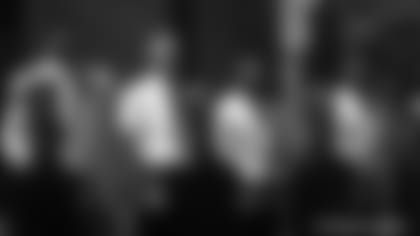
Fast forward to Aug. 1, 1998: no draft bust but a Hall of Fame bust.
With the No. 3 pick, the Bengals decided to trust their guy instead of the other team docs. Before the mid-80s, when the NFL decided to hold one combine, different scouting services signed up different teams and so prospects had to go to combines in Los Angeles, Philadelphia, New York and two or three other cities. At each one, Munoz was the last to leave because the doctors spent so much time looking at his knees.
Twenty-first century due diligence. The Bengals were the only team to send a coach to work with Munoz on the field after all the combines were done. And it was the head coach. Why not? He was one of the greatest tackles who ever lived. When Munoz heard Gregg was coming, he did his research. His offensive line heroes growing up were naturally West Coast guys like Art Shell and Gene Upshaw in Oakland, and Charlie Cowan, Joe Scibelli, and Tom Mack in Los Angeles. But soon, the budding pitcher emulated Chiefs quarterback Len Dawson and still remembers his offensive linemen by heart: Jim Tyrer, Ed Budde, Dave Hill and Jack Rudnay. (Remember the name Budde.)
Gregg? Munoz's research revealed that he was an All-Pro at two different offensive line spots and a Hall-of-Famer for Vince Lombardi in Green Bay. But on this day the 46-year-old Gregg was a pass rusher and he told Munoz to simply react.
"It wasn't a pre-meditated punch in the chest," Munoz says. "I just reacted when he exposed his chest. For four years we had worked on putting hands right in the chest if the defensive lineman gave it to you."
Gregg gave it to him and Munoz's shot sent the Hall-of-Famer sprawling on the ground.
"Believe me, my heart dropped to my feet," Munoz says in what must be his millionth telling of the story. "I apologized. He kind of smiled and I thought to myself it helped me out."
Munoz and Gregg have dined out on that story ever since, but the other scouting Munoz story that every Cincy kid also knows starts at the top. Mike and Pete Brown, along with their father, Bengals founder Paul Brown, made the call New Year's Day while they watched the Rose Bowl down the road at their home in La Jolla, Calif.
"It's a fond memory. I remember literally laughing the way he was overwhelming the guy opposite him," Mike Brown says. "He just controlled him absolutely. That impressed me."
USC denied unbeaten Ohio State a share of the national title that day, 17-16, a downer for the family. P.B., after all, had coached the Buckeyes to a national championship on the eve of World War II. But they were jaunty and relieved. They had found their man. If the medical came through.
"It was sort of a family decision," Mike Brown says. "It wasn't as detailed back then. We thought we had all the evidence we needed watching him that way. We didn't have the information we have today. There's probably more than we can assimilate. Did we have enough to make the judgment? We thought we did. In those days we didn't look for every bit of information. I'm not sure it was obtainable."
But they obtained all that was available on Munoz, including a look at his enormous intangibles.
"It's funny, but I had only played two series the whole year before the Rose Bowl and it was probably the best game I played in my four years," Munoz says. "I really wanted to get back to play. We had played in two Rose Bowls and I hadn't played in one. We were coming off a national championship and we were ranked No. 1 my senior year. I wanted to play in the Rose Bowl with the guys I came into school with and I went after it like a madman."
By the time the Browns had settled into their living room to watch Munoz on the first day of the '80s, they had already been tracking him since 1978. Or two knee operations ago. That's when Munoz, Michael Anthony, Jersey Number 77, filled out their "professional football prospect questionnaire."

Bengals offensive line coach Mike McCormack's report on Munoz a year and a week before the draft.
He told them he was born 8-19-58, stood 6-6, weighed 275 pounds "stripped," and was married. He informed them he had two years of eligibility left ("78 79"), his parent's name was Esther Munoz, a long dash represented his father's occupation, his college major was public administration. His 40-yard dash time in shorts was 5.1 timed by a coach, he circled both right or left tackle and, yes, he was first string. He had a knee operation when he was "18 yrs. old." His college coach was John Robinson, his positon coach was Hudson Houck, his trainer was Jack Ward and he participated in baseball.
"Yes," he wrote on the line that asked, "Are you interested in playing professional football with The Cincinnati Bengals?"
"Forrest was the only coach that came to work me out and that excited me. I thought I had the opportunity to show them my knees were OK," Munoz says. "I was just looking to get into a camp anyway I could."
The thing is, everyone knew he could play. The Bengals belonged to a scouting consortium known as "United," the forerunner of National Football Scouting now known as The National, and its raft of reports said it all, like the one filed by "Monroe," on Nov. 16, 1979:
"Strong points: Rare size. Outstanding strength … Exceptional pass and drive block. Exceptional explosion, and position and sustain. Weak Points: Check out injury (knee). Hurt in first game. Needs to lose wt. Firm up. Potential: Has all the tools if physically O.K. 1st Rd choice." As befitting a future NFL Man of the Year, Munoz graded 8s for the boxes of "Citizen, Team Player, Training Habits, Pride, Stability, Attitude, Coachable, Leadership."
He hadn't played since the second series of the season, when he got out in front on one of his patented Student Body sweeps and had to hurdle the pile. As his left leg hit the ground, a defensive back drilled him in the thigh with his helmet. It was the third season out of four he had suffered medial collateral damage and the second time on that play, ironically, the play that showed the pros just how big and athletic he was.
"All those (injuries) were wrong place, wrong time," Munoz says.
But the Bengals had the right guy in the right place in offensive line coach Mike McCormack, McNally's predecessor. McCormack, the former Eagles head coach, had a high standing in Bengaldom as a Hall-of-Fame tackle for Paul Brown in Cleveland. During Munoz's rookie year Brown published his autobiography in which he called McCormack, "The finest offensive tackle who ever played pro football."
In what proved to be a changing of the guard, McCormack filed two reports on Munoz before he left after the 1979 season to become the head coach of the Colts. His April 14, 1978 report is sparse, "Not out for spring baseball player not on scouting sheet but looking good in films. Quick feet – good runner – A 3rd baseman in baseball. But mainly a pitcher. Should indicate agility."
Actually, Munoz was doing a little more than that. Eight days later he drove to San Diego to get married on Saturday night after he bought a $300 engagement ring on time. It was a quick trip. He and DeDe had to get back by Monday morning for class and for whatever little of spring practice he could do as USC opened a series with UCLA.
By the next year there was no more baseball on McCormack's sheet of April 19, 1979:
"Watched him in wt room – Big Fleshy Kid who is not aware of what he can do and what he can become … As a football player is big, fast, seems to enjoy game Comes off ball well will be an early #1 and would help us Has played left tackle A Bull Dozer when run blocking. Hulk to run around on pass protection They work on pro type of pass protection here."
Next to strong points McCormack went for "Size, Attitude, Bulk, Program _ No weak points. He circled 1 for what round to consider him.

Anthony Munoz became simply "No. 78," in Cincinnati.
That scouting report, coming from a player Paul Brown so admired a year and a week and another knee operation before the draft, had to have as much impact on him when it came to selecting Munoz as the block on Gregg and the Rose Bowl domination of Ohio State. It was the Ballou memo that sealed it. But McCormack's short-hand no doubt also answered any lingering long-term questions.
"That would have been a great one watching a great one," Mike Brown says.
Listening to McCormack's report from all those years ago has Munoz nodding his head. McCormack absolutely crushed it. He had no idea how good he could be. Until after the draft and it was DeDe that let him in on the not-so-secret secret.
Remember the name Ed Budde? He was the All-Pro guard on those Chiefs teams the teen-aged Munoz followed. It turns out his son Brad was Munoz's college line mate and Anthony would always talk about his friend's imposing physical gifts matched only by his football upbringing.
But more than once it was Ed who asked DeDe out of ear shot of her husband, "Do you realize how great Anthony is or can be?" Brad who would be drafted eight picks after Anthony by his dad's Chiefs, would say the same thing. DeDe, new to the sport and still learning it all, could only politely say, "No."
"When I got to 'SC I wanted to compete. I was excited about being there and I started to do pretty well early on," Munoz says. "(Head coach) John Robinson was saying when I first got there I could be one of the best ever. I'm thinking, 'I don't know …' the confidence wasn't there."
He didn't hear about it until after the draft, which turned out to be brief for both Munoz and Budde as they waited for the phone to ring. It was the first year ESPN covered the draft, but with no video highlights or trip to New York, they preferred to do it the old-fashioned way.
Munoz, Budde, and center Chis Foote, who would be drafted by McCormack's Colts in the sixth round and hang around the league for 11 seasons, huddled around the phone with their significant others in the USC student apartment. Anthony and DeDe would pay off the engagement ring once the contract got signed.
Oklahoma running back Billy Sims went No. 1 to the Lions. Texas wide receiver Lam Jones went to the Jets No. 2. Then the phone rang. It was a secretary calling from 200 Riverfront Stadium. She told Munoz she was putting him through to Bengals offensive line coach Jim McNally.
"You're our guy. We're picking you," McNally said.
But they had already made that call a few months ago.
Take a look at the 2018 Bengals regular season schedule in pictures.
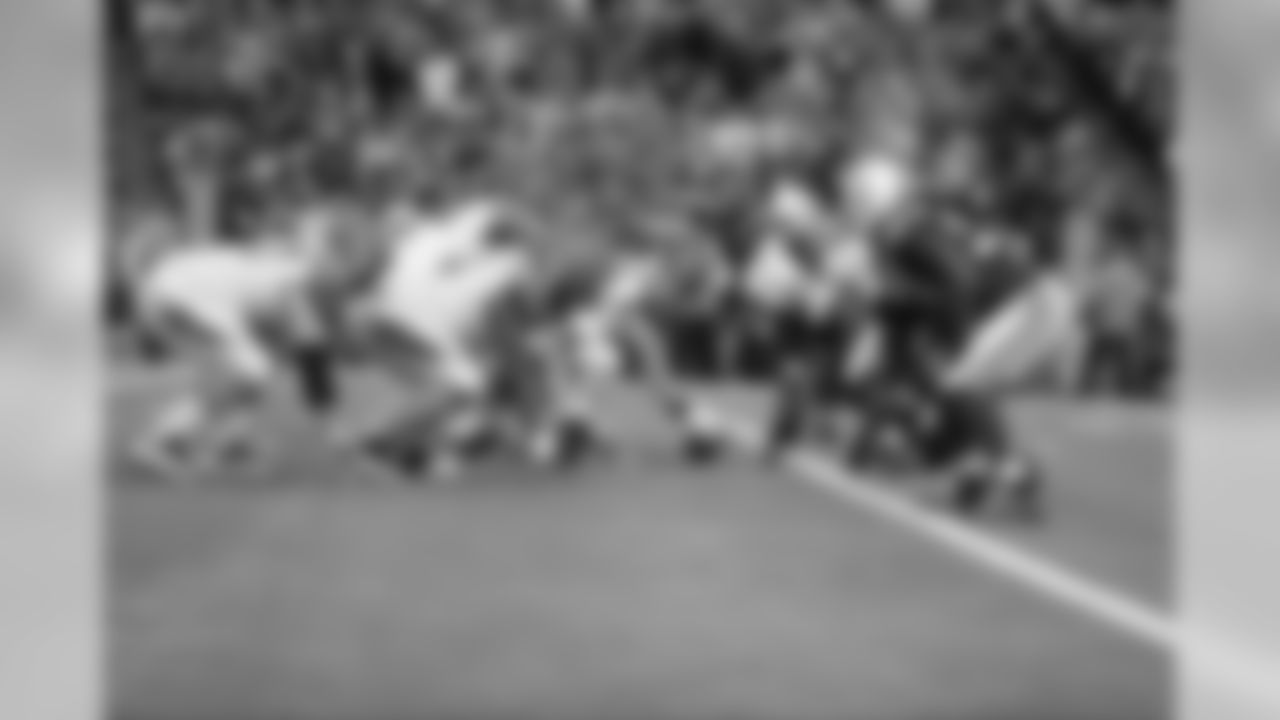
Week 1 – At Indianapolis Colts AP Photo/Michael Conroy
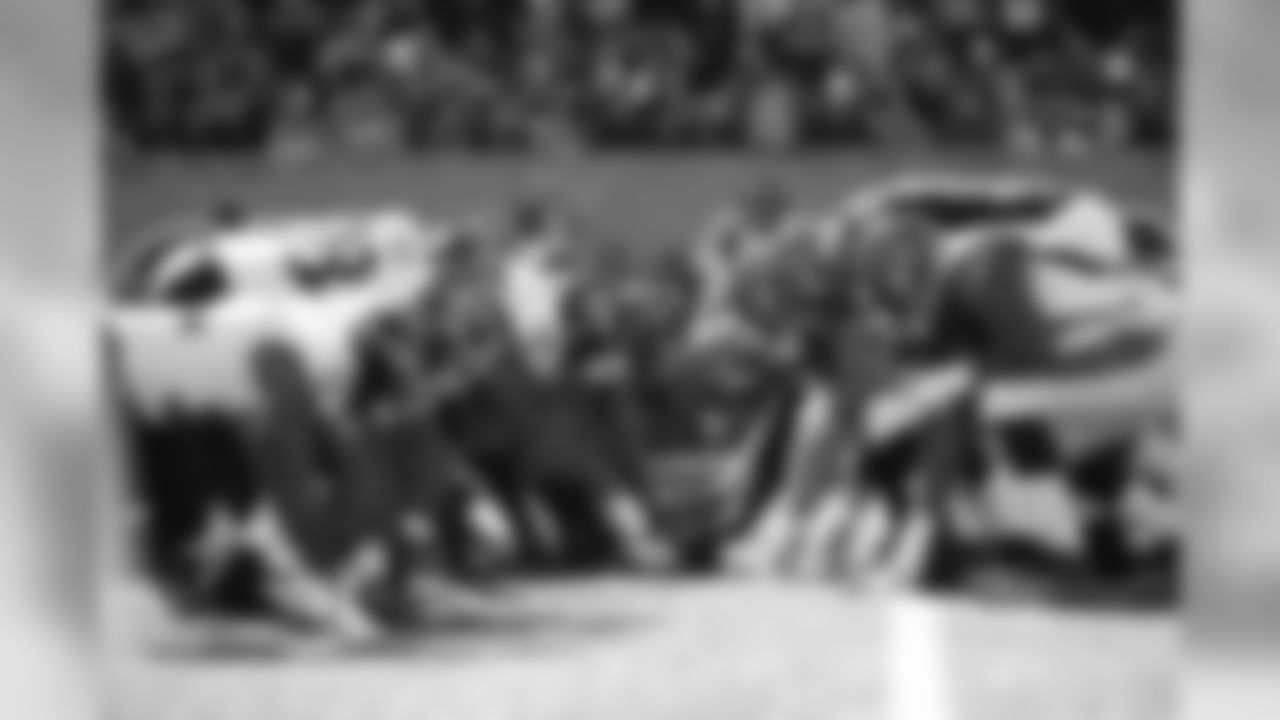
Week 2 – Baltimore Ravens AP Photo/Tom Hauck
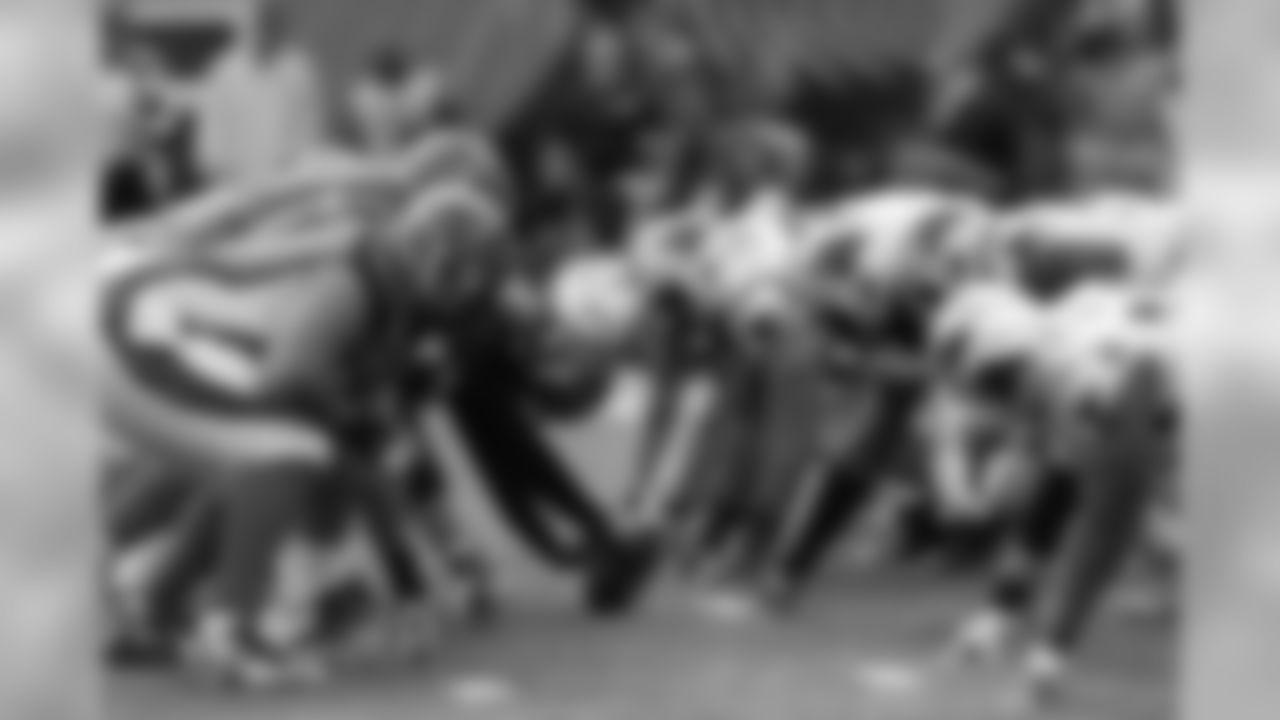
Week 3 – At Carolina Panthers AP Photo/Scott Boehm
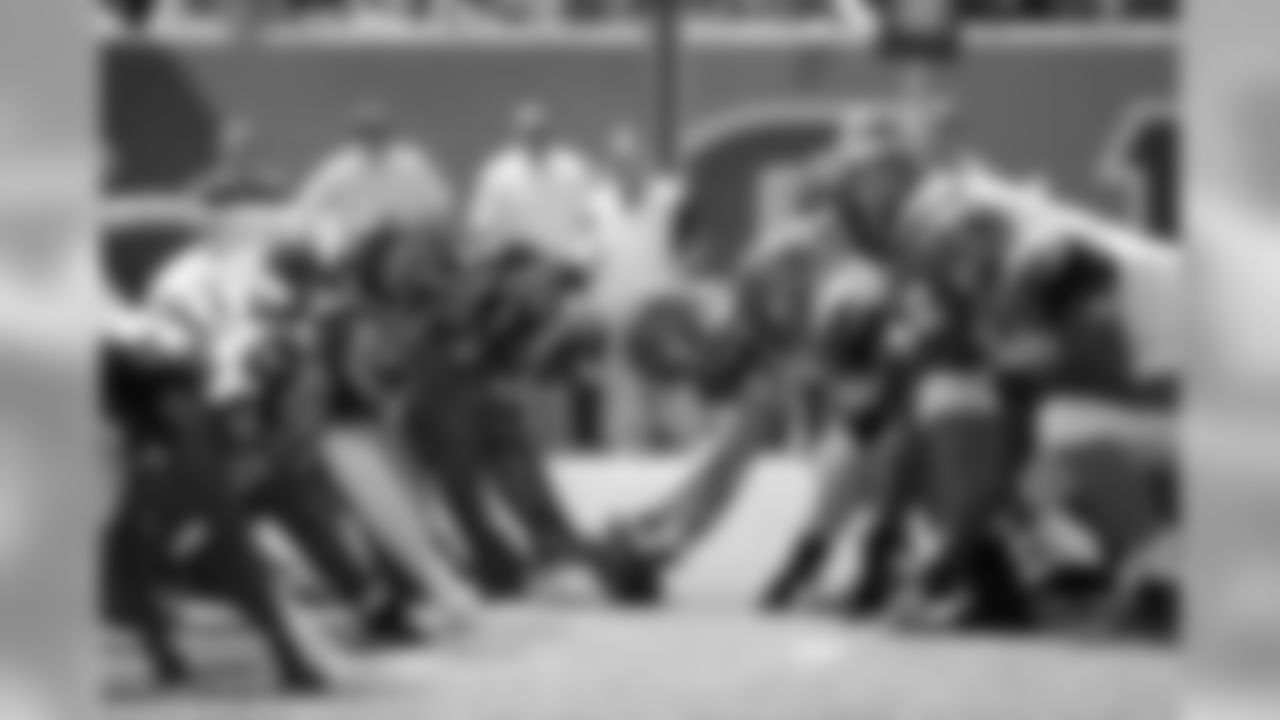
Week 4 – At Atlanta Falcons P Photo/G. Newman Lowrance
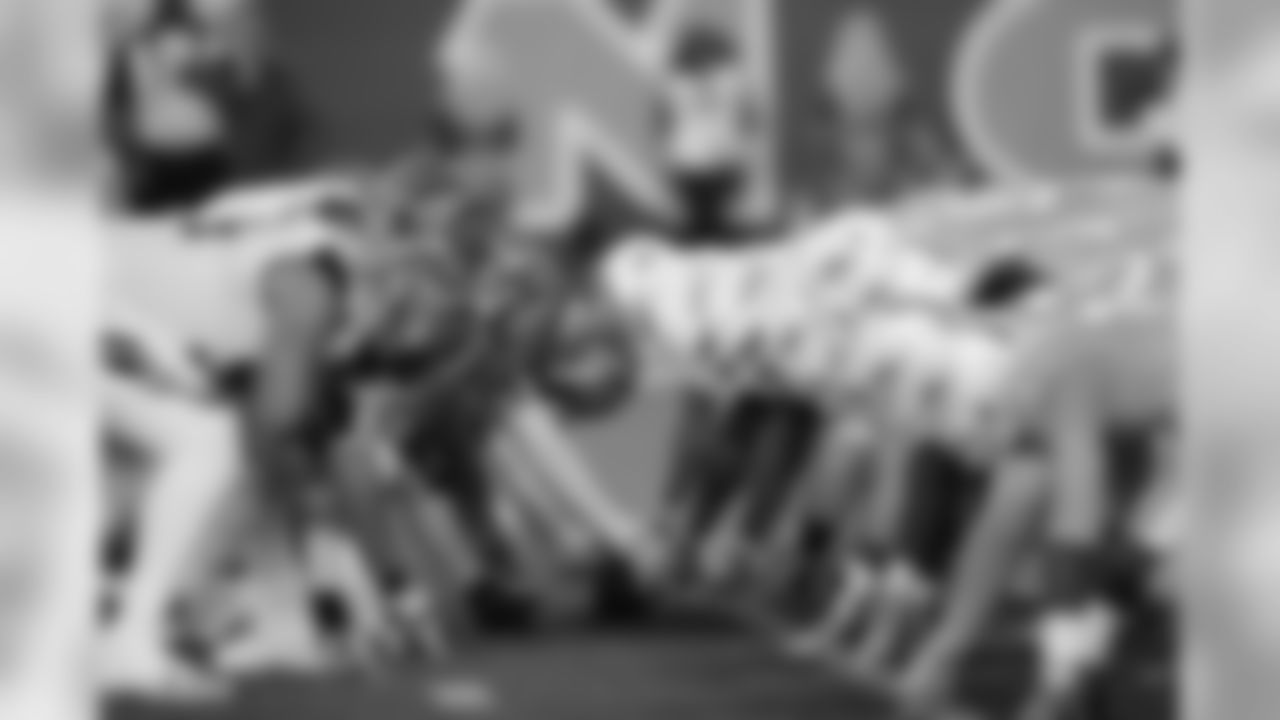
Week 5 – Miami Dolphins Scott Boehm via AP
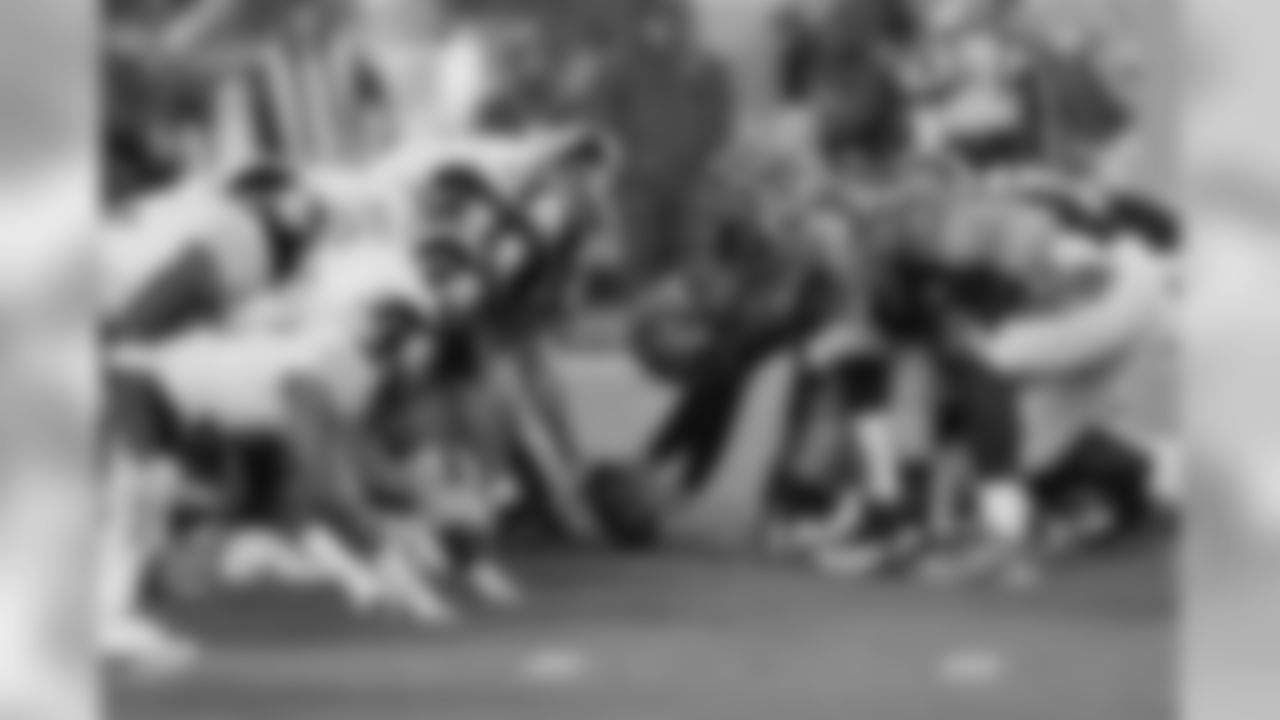
Week 6 – Pittsburgh Steelers Scott Boehm via AP
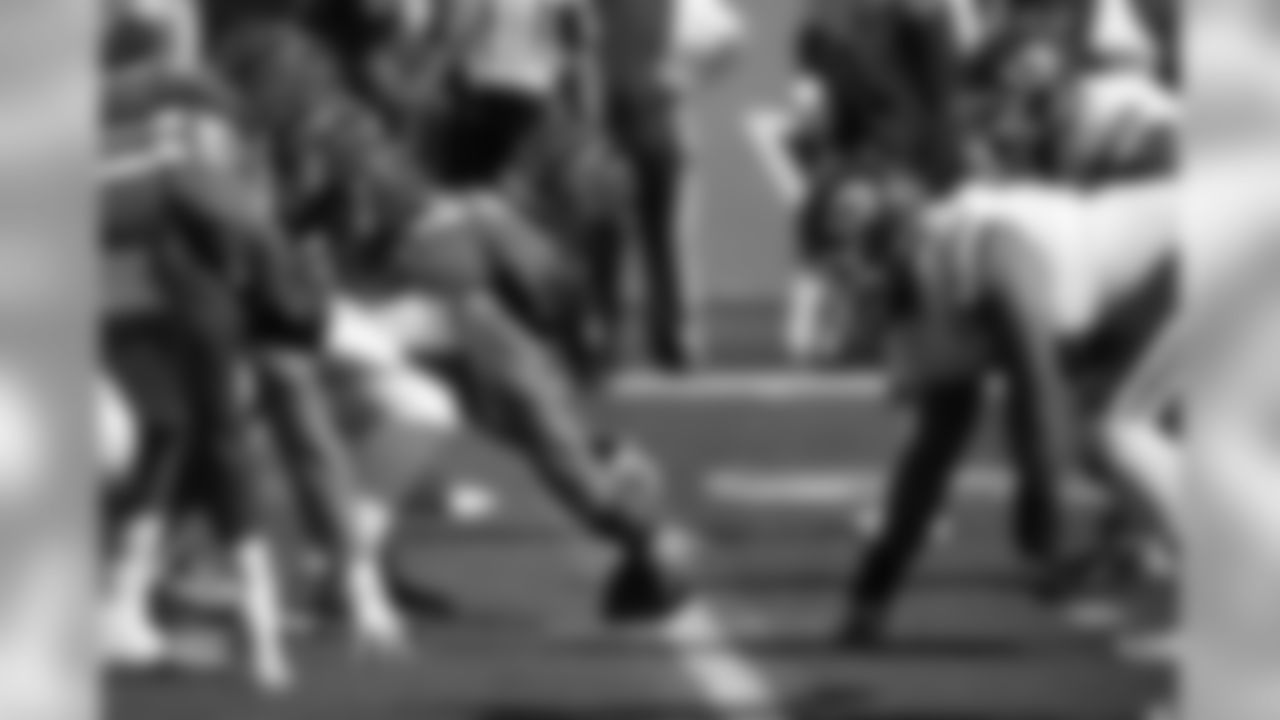
Week 7 – At Kansas City Chiefs AP Photo/Frank Victores
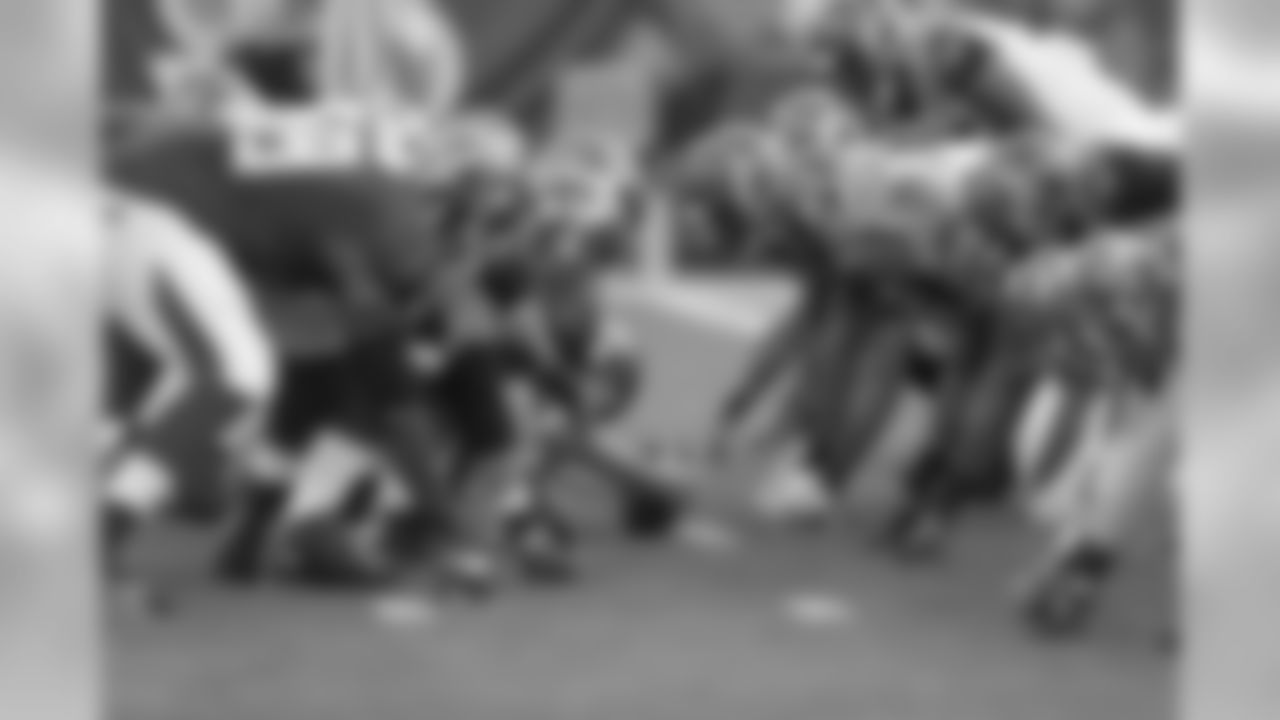
Week 8 – Tampa Bay Buccaneers Scott Boehm via AP
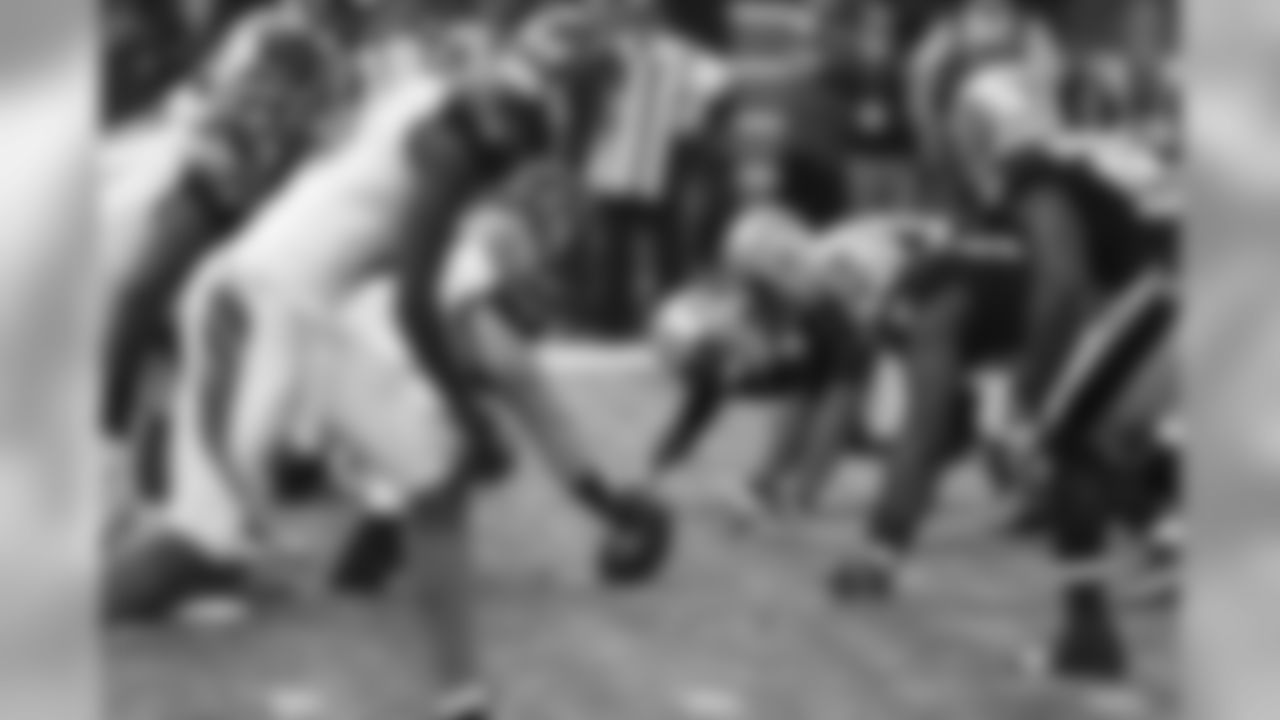
Week 10 – New Orleans Saints AP Photo/Rogelio Solis
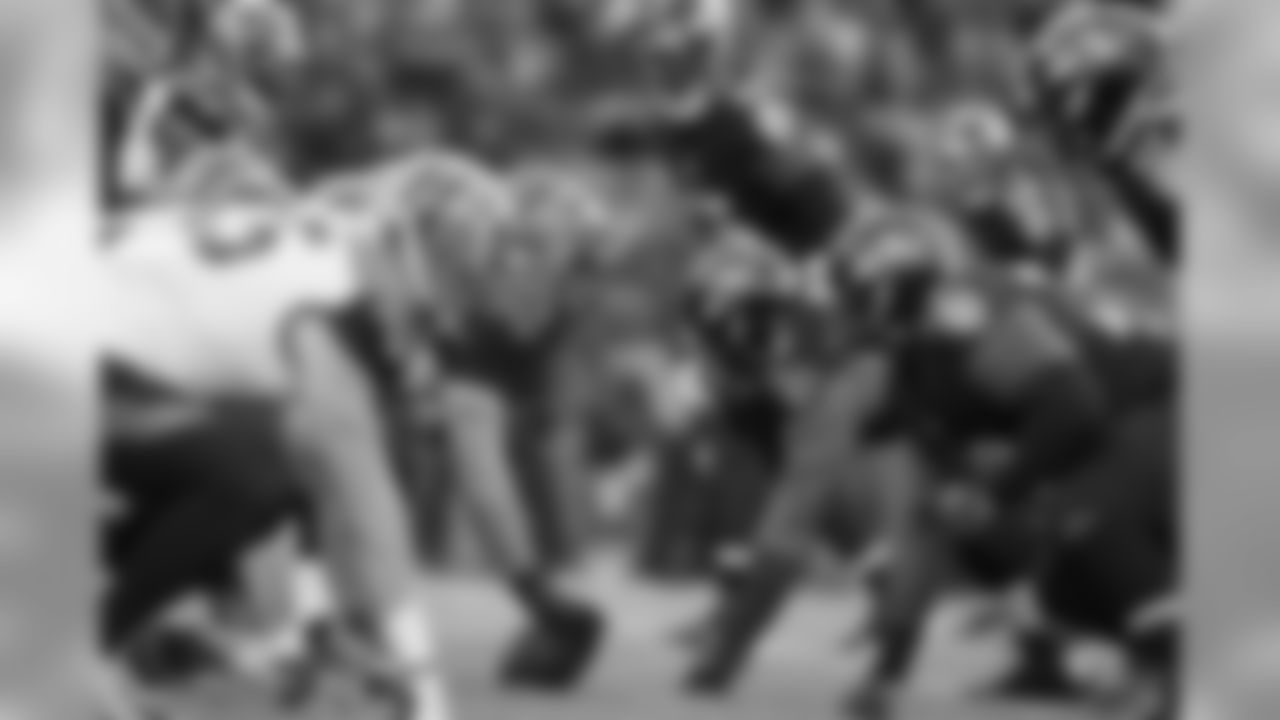
Week 11 – at Baltimore Ravens Perry Knotts via AP
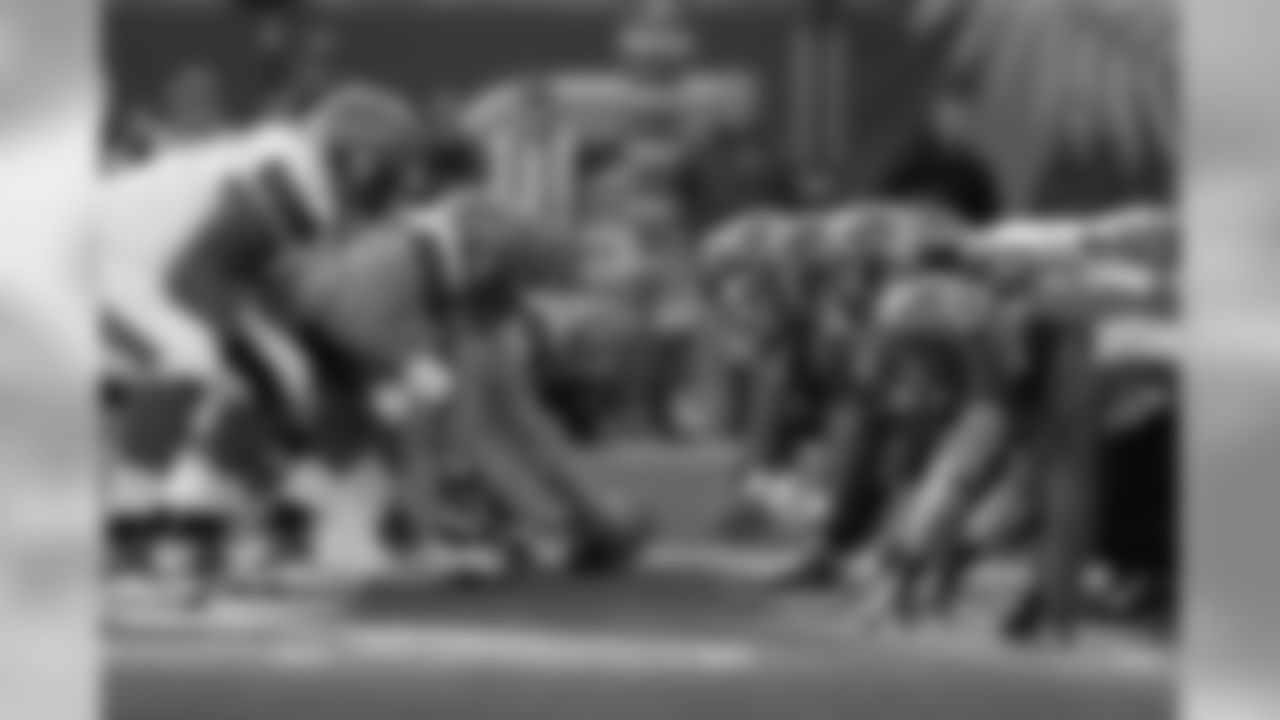
Week 12 – Cleveland Browns Scott Boehm via AP
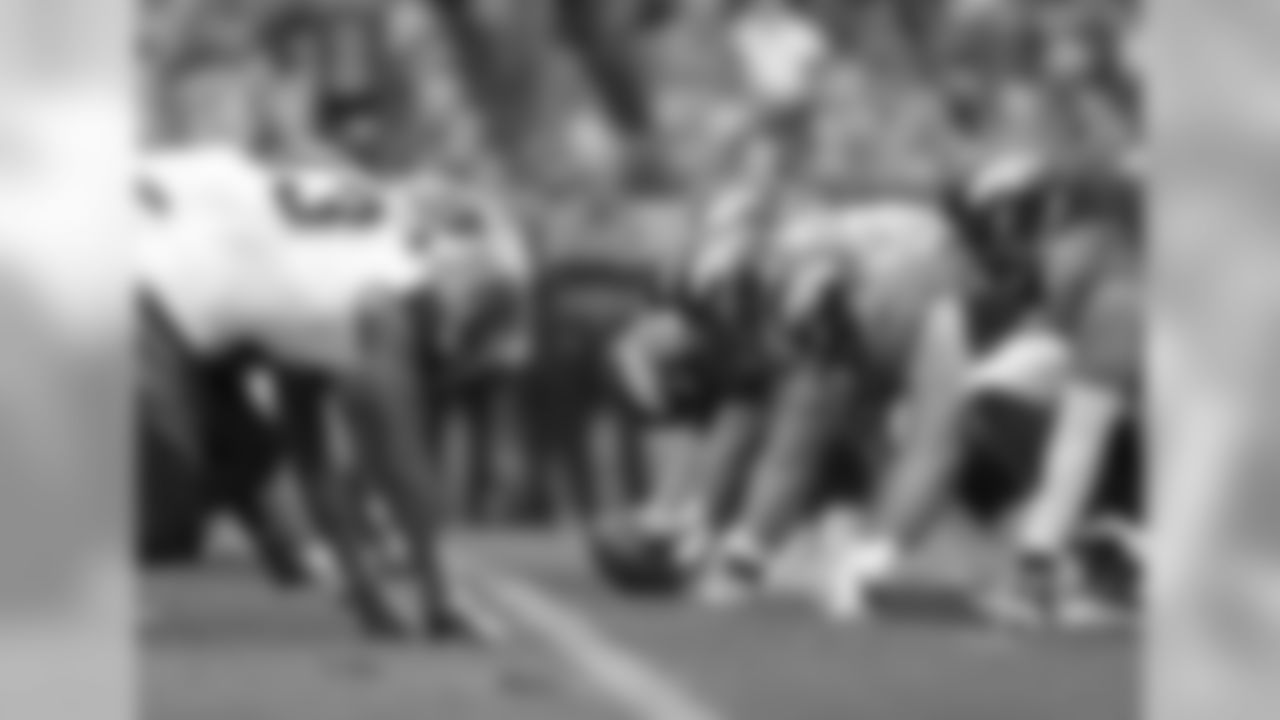
Week 13 – Denver Broncos Greg Trott via AP

Week 14 – At L.A. Chargers G. Newman Lowrance via AP
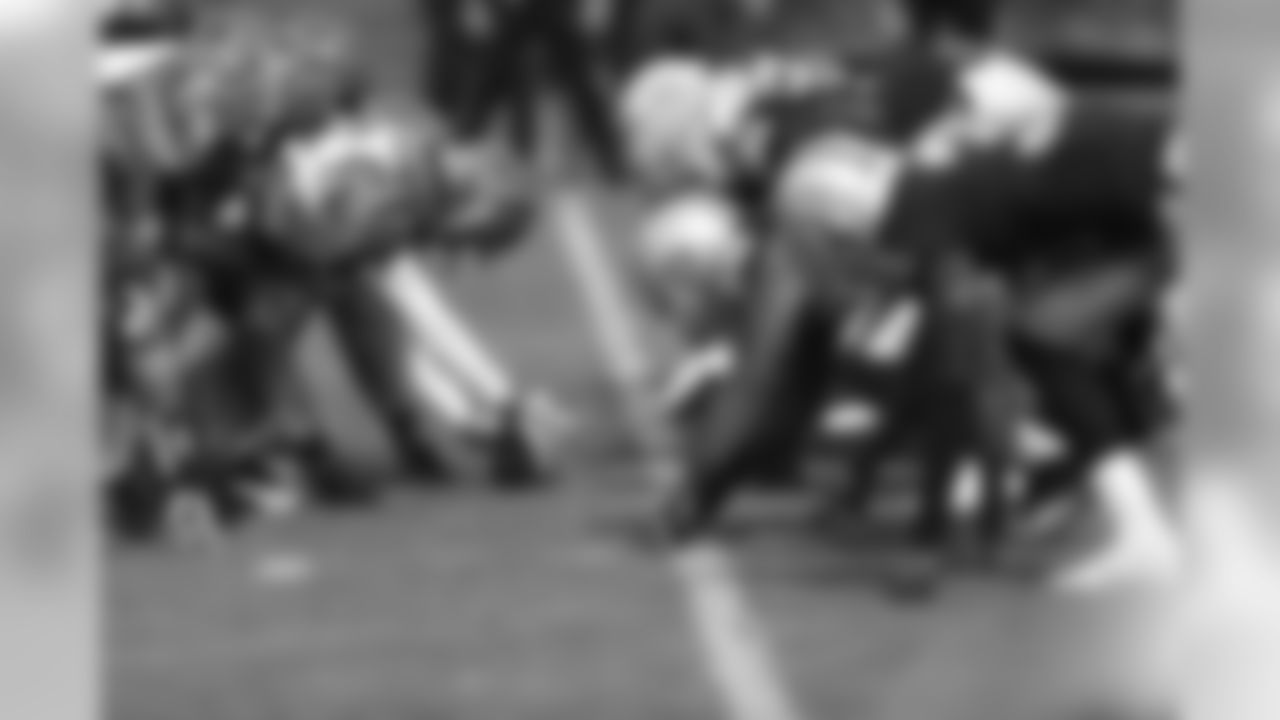
Week 15 – Oakland Raiders Paul Jasienski via AP
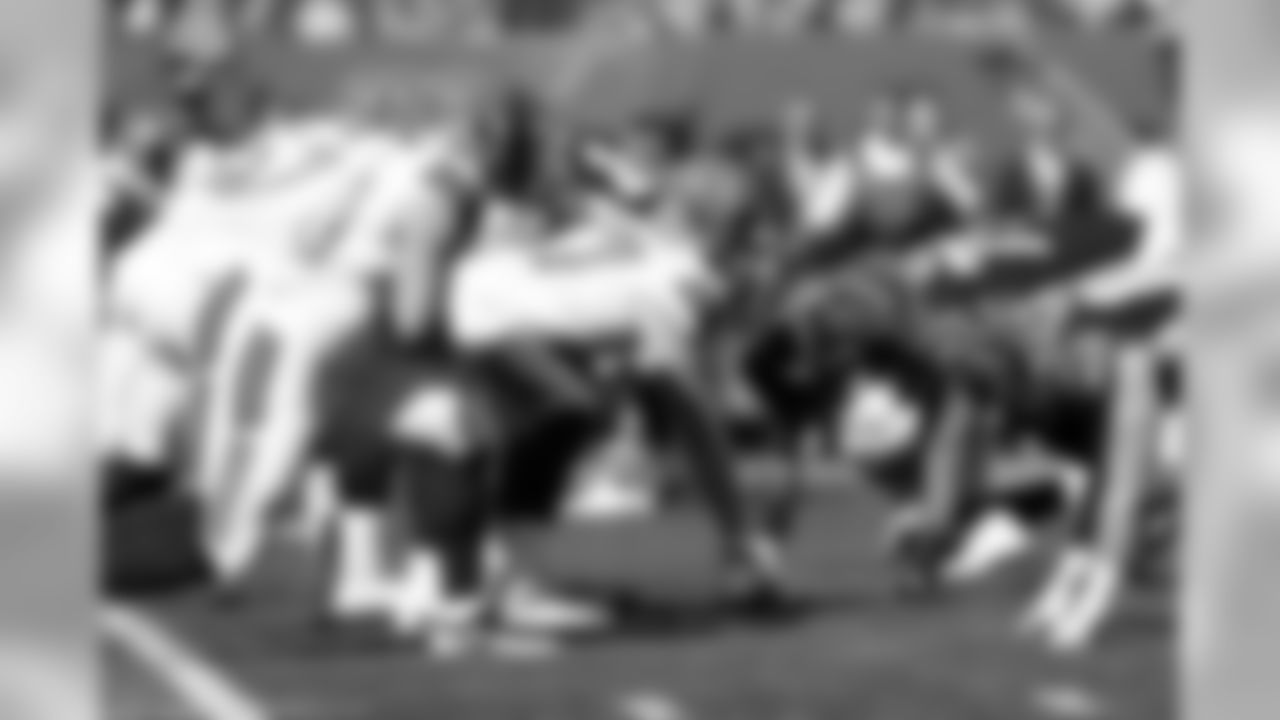
Week 16 – At Cleveland Browns Paul Spinelli via AP
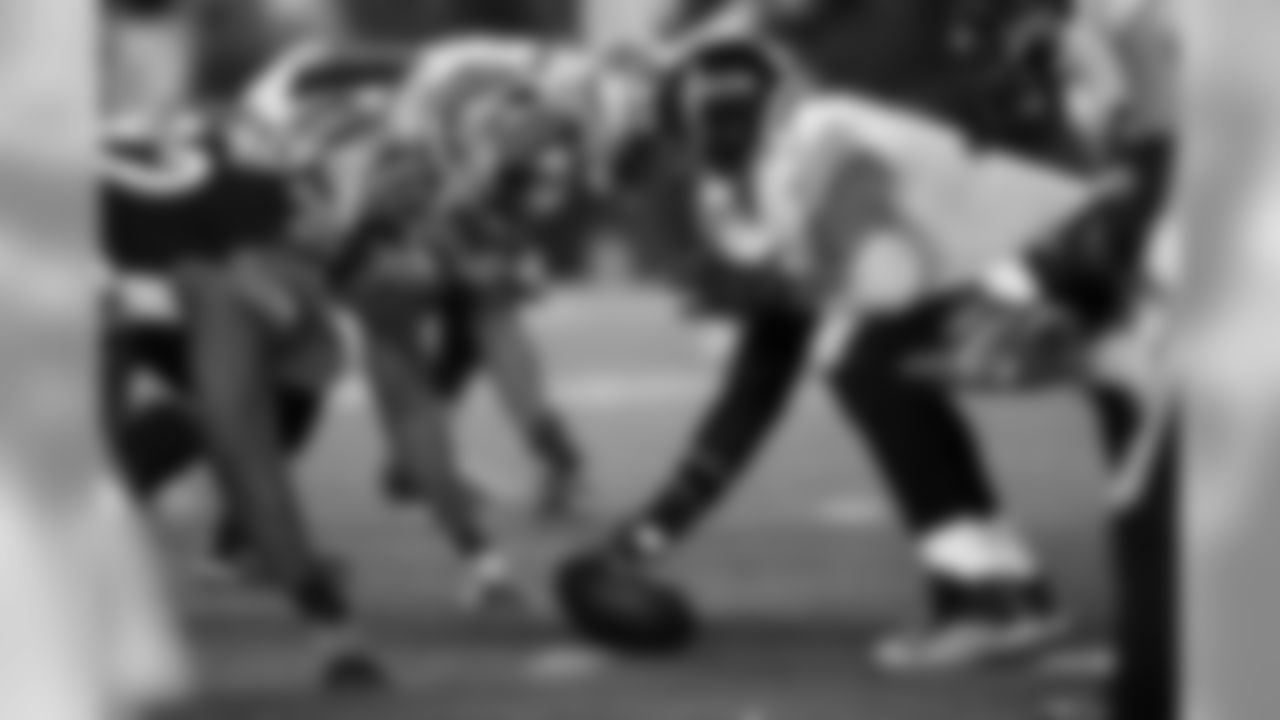
Week 17 – At Pittsburg Steelers Paul Spinelli via AP



